In an ever-changing digital world, free emailing remains an essential pillar of many companies’ marketing strategies. Whether to promote products, build customer loyalty or generate leads, free emailing offers businesses a powerful way of communicating with their audience in a direct and effective way. In this article, we’ll explore the importance of free emailing for businesses, highlighting best practices, emerging trends and successful case studies. Find out how to make the most of free emailing to drive business growth and achieve your marketing objectives.
Table des matières
Importance of free emailing for businesses
Free emailing is an essential marketing pillar for businesses of all sizes. This strategy offers a multitude of benefits that can help drive growth, strengthen customer loyalty and optimize return on investment (ROI). In this chapter, we’ll explore why free emailing is so crucial for businesses, and how it can be used effectively to achieve your business objectives.
Why Free Emailing is Essential
Reach and accessibility: Email is one of the most widespread and accessible communication channels, with billions of users worldwide. By using free emailing, companies can reach a wide audience without incurring additional costs, making it a particularly cost-effective marketing tool.
Customer engagement: Free emailing offers an effective platform for engaging existing and potential customers. By sending personalized, relevant messages, companies can strengthen relationships with their audience, foster loyalty and encourage desired actions, such as purchases or registrations.
Product and service promotion: Free email campaigns enable companies to promote their products and services in a targeted and effective way. Using techniques such as list segmentation and content personalization, companies can send relevant offers to their customers, increasing the chances of conversion.
Tracking and analysis: Free emailing tools offer advanced tracking and analysis features that enable companies to measure and optimize their performance. By tracking metrics such as open rate, click-through rate and conversion rate, companies can understand the behavior of their recipients and adjust their strategy accordingly.
Brand building: Free emailing offers a valuable opportunity to reinforce your company’s brand. By sending consistent, professional emails, companies can build brand recognition, establish credibility and differentiate their offering from that of their competitors.
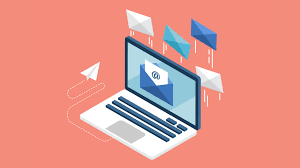
Types of free emailing solutions available
In the complex landscape of email marketing, there are a variety of free solutions available to businesses. Each of these solutions offers its own unique benefits and features, tailored to different needs and budgets. In this chapter, we’ll explore some of the main categories of free email marketing solutions, highlighting their distinctive features and preferred use cases.
Free email marketing platforms
Free email marketing platforms are online tools that enable businesses to create, send and manage email campaigns at no upfront cost. These solutions generally offer basic features such as email template design, contact list management and performance tracking.
Free emailing services included in other tools
Some broader marketing tools, such as customer relationship management (CRM) software or e-commerce platforms, offer integrated free emailing functionalities. These solutions enable companies to centralize their marketing efforts and leverage consolidated customer data for more targeted and effective campaigns.
Affiliate and referral programs
Some affiliate and referral programs offer free email credits in exchange for signing up new users or carrying out specific actions. These programs can be an attractive option for companies looking for free emailing solutions with advanced features and no up-front costs.
Open source tools
Open source emailing tools are free software whose source code is publicly available and can be customized to the user’s needs. Although these solutions generally require technical skills for installation and maintenance, they offer complete flexibility and control over email campaigns.
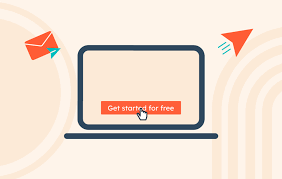
Advantages and disadvantages of free emailing services
Free emailing services offer a valuable opportunity for companies to communicate effectively with their target audience without incurring upfront costs. However, like any solution, they have both advantages and disadvantages that are important to consider when using them. In this chapter, we’ll look at the main advantages and disadvantages of free emailing services, as well as their impact on your overall marketing strategy.
Advantages of free emailing services
Zero cost: One of the main advantages of free emailing services is that they require no initial financial investment, making them accessible to businesses of all sizes, especially small and medium-sized enterprises with limited budgets.
Ease of use: Most free emailing services are designed to be user-friendly, with intuitive interfaces and simple-to-understand functionality. This enables users to create and send email campaigns without requiring advanced technical skills.
Broad reach: Free emailing services enable businesses to reach a wide audience, with the ability to send emails to thousands or even millions of recipients in just a few clicks.
Tracking and analysis: Free emailing services offer advanced tracking and analysis features, enabling companies to measure and optimize the performance of their campaigns. This includes metrics such as open rate, click-through rate and conversion rate.
Personalization: Free emailing services offer the ability to personalize messages according to recipients’ preferences and behavior, which can increase engagement and conversion rates.

Disadvantages of Free Emailing Services
Feature limitations: Free emailing services may have limited functionality compared to their paid counterparts, particularly in terms of advanced personalization, automation and customer support.
Volume restrictions: Some free emailing services impose restrictions on the volume of emails sent, which can limit the scope of campaigns and hamper business growth.
Spam risk: Free emailing services are sometimes associated with an increased risk of spam, as the IP addresses used to send emails may be shared with other users, which can affect the deliverability of messages.
Embedded advertisements: Some free emailing services embed advertisements in the emails they send, which can negatively affect the company’s brand image and the perception of recipients.
Dependence on the service provider: By using a free emailing service, companies become dependent on the service provider, which can cause problems if the provider decides to change its policies or terminate the service.

Tips for choosing the best free emailing service
Choosing the best free emailing service can be a tricky task, with so many options available on the market. To help you make an informed decision, we’ve put together some key tips to keep in mind when making your selection. In this chapter, we’ll explore these tips and provide you with practical advice on choosing the free emailing service best suited to your business needs.
- Assess your needs
Before choosing a free email marketing service, take the time to assess your specific email marketing needs. Determine the volume of emails you plan to send, the features you need (such as list segmentation, automation and split testing), and your available budget for emailing tools. - Look for Essential Features
Make sure the free emailing service you’re considering offers the essential features you need to manage your campaigns successfully. This may include the creation of personalized email templates, contact list management, performance tracking and compliance with data protection regulations. - Check ease of use
Opt for a free emailing service that offers a user-friendly and intuitive interface, even for novice users. You don’t want to end up with a complex tool that requires a steep learning curve, especially if you have limited resources in terms of time and technical skills. - Consider Deliverability
Email deliverability is crucial to the success of your email campaigns. Make sure you choose a free emailing service with a good reputation for deliverability, so that your messages reach your recipients’ inboxes and aren’t filtered as spam. - Explore Limitations
Before committing yourself to a free emailing service, carefully examine the limitations it imposes in terms of sending volume, contact storage and available features. Make sure these limitations don’t compromise your ability to run effective email campaigns over the long term.
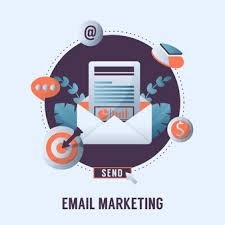
Getting started with a free emailing service
Launching your first free email campaigns can seem daunting, but with the right advice, you can get started with confidence and success. In this chapter, we’ll guide you through the essential steps to getting started with a free emailing service, providing practical advice and best practices to maximize your chances of success.
- Choose the right service
Before you start, make sure you’ve selected the free emailing service that best suits your needs and objectives. Refer to the previous chapter for detailed advice on selecting the best service, taking into account factors such as features, ease of use and reputation for deliverability. - Create your contact list
The first step in getting started with a free emailing service is to build your contact list. Gather the email addresses of your current and potential customers, ensuring that you obtain their explicit consent to receive communications from you in compliance with data protection regulations. - Design your email templates
Once your contact list is ready, move on to designing your email templates. Choose an attractive, professional design that reflects your brand image, and personalize it with relevant, engaging content. Also make sure your emails are optimized for easy reading on all devices, including smartphones and tablets. - Plan your campaigns
Before you send your first emails, plan your campaigns carefully to maximize their impact. Determine the optimal time to send your emails based on your audience’s behavior, and use automation tools to schedule the sending in advance. - Track and analyze results
Once your emails have been sent, carefully monitor the performance of your campaigns using the analysis tools provided by your free email marketing service. Monitor metrics such as open rate, click-through rate and conversion rate, and use this data to optimize your future campaigns.

Essential features in a free emailing service
To take full advantage of your free emailing strategy, it’s essential to have the features you need to successfully create, send and manage your campaigns. In this chapter, we’ll look at the key features that every good free emailing service should offer, and their importance to your email marketing efforts.
- Creating email templates
An essential feature of any free email marketing service is the ability to easily create attractive, professional email templates. These templates serve as the basis for your campaigns, and should allow easy customization of content, images and calls-to-action. - Contact List Management
A good free email marketing service should enable you to manage your contact lists efficiently, including importing, segmenting and updating contacts. Advanced contact management functionality will enable you to target your campaigns according to the interests and behaviors of your audience. - Campaign automation
Automation is a crucial element of any emailing strategy, even in a free service. Look for features such as automated email sequences, behavior-based triggers and automated marketing workflows to maximize the effectiveness of your campaigns. - Performance tracking
To evaluate the effectiveness of your email campaigns, robust tracking and analysis tools are essential. Features such as tracking open rates, click-through rates and conversion rates will enable you to measure the impact of your emails and identify areas for improvement. - Regulatory compliance
Make sure your free emailing service complies with data protection regulations, such as the RGPD in Europe. Regulatory compliance features, such as consent management and the ability to unsubscribe, are crucial to maintaining your subscribers’ trust and avoiding legal problems.
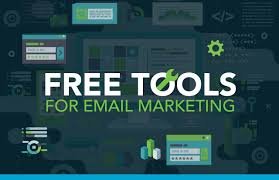
Best practices in free email design
Effective email design is crucial to ensuring that your messages capture the attention of your recipients and prompt them to take action. In this chapter, we’ll share some free email design best practices to help you create attractive, impactful emails.
- Be Concise and Relevant
Keep your emails clear, concise and relevant. Limit yourself to one main message per email, and use simple, direct language. Recipients should immediately understand what you’re offering and why it’s relevant to them. - Use a simple, uncluttered design
Opt for a clean, uncluttered email design that highlights your content. Use simple layouts, colors consistent with your brand and easy-to-read typography. Avoid overloaded designs that can distract or frustrate recipients. - Personalize Content
Use personalization to make your emails more relevant and engaging. Include the recipient’s name in the subject or body of the email, and use data on their preferences or behavior to tailor content to their interests. - Opt for a clear Call to Action
Every email should include a clear and convincing call-to-action (CTA) that prompts recipients to take action. Use strong language and visual action buttons to encourage clicks, and make sure your CTA is easy to spot in the email. - Test and optimize
Conduct regular A/B tests to evaluate the effectiveness of different elements of your emails, such as subject lines, designs and CTAs. Use this data to optimize your campaigns and continually improve your results.
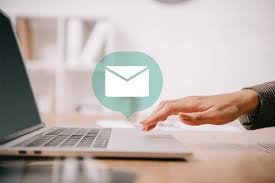
Effective contact list management
Effective email design is crucial to ensuring that your messages capture the attention of your recipients and prompt action. In this chapter, we’ll share some free email design best practices to help you create attractive, impactful emails.
- Be Concise and Relevant
Keep your emails clear, concise and relevant. Limit yourself to one main message per email, and use simple, direct language. Recipients should immediately understand what you’re offering and why it’s relevant to them. - Use a simple, uncluttered design
Opt for a clean, uncluttered email design that highlights your content. Use simple layouts, colors consistent with your brand and easy-to-read typography. Avoid overloaded designs that can distract or frustrate recipients. - Personalize Content
Use personalization to make your emails more relevant and engaging. Include the recipient’s name in the subject or body of the email, and use data on their preferences or behavior to tailor content to their interests. - Opt for a clear Call to Action
Every email should include a clear and convincing call-to-action (CTA) that prompts recipients to take action. Use strong language and visual action buttons to encourage clicks, and make sure your CTA is easy to spot in the email. - Test and optimize
Conduct regular A/B tests to evaluate the effectiveness of different elements of your emails, such as subject lines, designs and CTAs. Use this data to optimize your campaigns and continually improve your results.
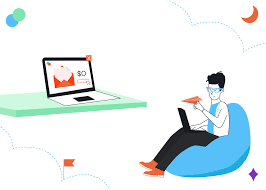
Free email deliverability optimization
Good e-mail deliverability is essential to ensure that your messages reach your recipients’ inboxes. Here are a few recommended practices to optimize the deliverability of your free emails and maximize the effectiveness of your campaigns.
- Use an authentic sender address
Use an authentic, recognizable sender address for your emails. Avoid generic or unreliable addresses, as they can be associated with spam and affect the deliverability of your messages. - Avoid suspicious practices
Avoid practices likely to trigger spam filters, such as using suspicious keywords in the subject or body of the email, sending mass emails in a short space of time, or buying unverified contact lists. - Check the quality of your content
Make sure the content of your emails is of high quality and relevant to your recipients. Avoid spelling and grammatical errors, use professional language and provide useful, engaging content for your audience. - Personalize Your Emails
Use personalization to make your emails more relevant and engaging for your recipients. Include their name in the subject or body of the email, segment your list according to their interests, and propose personalized offers based on their purchase history or behavior. - Monitor deliverability metrics
Regularly monitor your e-mail deliverability metrics, such as bounce rates, spam complaints and deliverability rates. Identify and resolve any deliverability issues quickly to prevent your emails from being blocked or filtered as spam in the future.
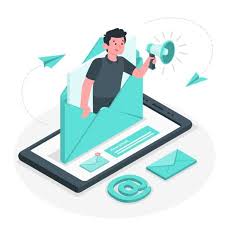
Strategies for increasing subscriber engagement
Subscriber engagement is a crucial element of any successful email marketing strategy. Engaged subscribers are more likely to open your emails, click on your links and convert, which can have a significant impact on your bottom line. Here are some effective strategies for boosting subscriber engagement.
- Personalize Your Emails
Use personalization to make your emails more relevant and attractive to your subscribers. Include their name in the subject or body of the email, segment your list according to their interests and behavior, and offer personalized offers based on their history of interaction with your brand. - Offer valuable content
Provide your subscribers with valuable content that meets their needs and interests. Offer tips, tricks, how-to guides, case studies or exclusive special offers that will encourage them to open your emails and engage with your brand. - Use compelling Call-to-Actions (CTAs)
Use clear, compelling call-to-actions (CTAs) to encourage action from your subscribers. Use persuasive language, visual action buttons and attractive formatting to entice subscribers to click on your links and interact with your content. - Send relevant, consistent e-mails
Send relevant, consistent emails that meet your subscribers’ expectations and reflect your brand image. Avoid sending too many unsolicited or irrelevant emails, as this can lead to lower engagement and churn rates. - Encourage interaction
Encourage interaction with your emails by asking questions, launching polls or inviting subscribers to share their opinions or experiences. Create opportunities for a two-way dialogue with your subscribers, which can strengthen their long-term commitment and loyalty.

Measuring the success of free email campaigns
Measuring the success of your email campaigns is essential for evaluating their effectiveness and identifying areas for improvement. Here are some key metrics you should monitor to evaluate the success of your free email campaigns.
- Open rate
The open rate measures the percentage of subscribers who actually open your emails in relation to the total number of emails sent. It’s an important indicator of the appeal of your subject line and the relevance of your content to your subscribers. - Click-through rate
The click-through rate indicates the percentage of subscribers who clicked on a link in your e-mail compared with the total number of e-mails sent. It’s an indicator of your audience’s engagement with your content and interest in your offers. - Conversion rate
The conversion rate measures the percentage of subscribers who carried out a desired action after clicking on a link in your email, such as making a purchase, filling in a form or downloading a document. It’s the ultimate indicator of your campaign’s success. - Unsubscribe rate
The unsubscribe rate indicates the percentage of subscribers who unsubscribed from your list after receiving your email. While a low unsubscribe rate is desirable, it’s important to monitor this metric to identify any potential problems with your content or send frequency. - Bounce rate
The bounce rate measures the percentage of emails that were not successfully delivered due to an invalid email address, an unavailable mail server or other technical problems. A high bounce rate may indicate problems with the quality of your contact list or with the configuration of your e-mail server.

Free emailing success case studies
Free emailing success case studies provide concrete examples of how companies have effectively used email campaigns to achieve their marketing objectives. Here are some inspiring case studies that demonstrate the benefits and effective strategies of free emailing.
Case Study 1: Increasing sales with a segmentation strategy
An e-commerce company segmented its contact list according to customers’ buying behaviors and preferences. By sending personalized emails with product recommendations based on previous purchases, they were able to increase sales by 30% and retain their existing customer base.
Case Study 2: Improving Engagement through Relevant Content
A financial services company launched a free email campaign offering personalized financial advice to their subscribers. By providing valuable content and addressing the specific needs of their audience, they increased their engagement rate by 40% and boosted the trust of their subscribers.
Case Study 3: Reducing Advertising Costs with Automation
A technology start-up used automated email campaigns to promote their new product to subscribers. By automating the process of sending welcome, follow-up and follow-up emails, they were able to reduce their advertising costs by 20% while maintaining a high conversion rate.

Emerging trends in free emailing
Free emailing is a constantly evolving field, with the emergence of new trends and technologies influencing the way companies communicate with their subscribers. Here’s an overview of emerging trends in free emailing and their impact on email marketing strategies.
- Advanced personalization
Email personalization has become more sophisticated, with the use of artificial intelligence and machine learning to create more personalized experiences for subscribers. Companies are leveraging behavioral and contextual data to send ultra-personalized emails, improving engagement and conversion rates. - Intelligent automation
Email automation continues to grow, with more advanced features such as automated workflows based on subscriber behavior. Companies are using automation to send welcome emails, follow-up emails, reactivation emails and product recommendation emails, optimizing the effectiveness of their campaigns. - Adaptive design
Adaptive design is becoming increasingly important in email marketing, given the diversity of devices used to view emails. Companies are adopting email designs optimized for mobile and tablet devices, ensuring a consistent user experience whatever the device used. - Interactive content
Interactive content is gaining popularity in email, offering subscribers a more engaging and immersive experience. Companies are integrating elements such as polls, image galleries, carousels and voting buttons directly into their emails, stimulating interaction and boosting engagement. - Respecting data privacy
With the increased focus on privacy and compliance with regulations such as the RGPD, companies are paying greater attention to how they collect, use and store subscriber data. Respecting data confidentiality is becoming a top priority, prompting companies to adopt transparent data collection practices and give subscribers greater control over their personal information.

Frequently asked questions:
What are the benefits of using a free emailing service for businesses? Using a free emailing service offers businesses a cost-effective way to reach their target audience, engage potential customers and promote their products or services.
How to choose the best free emailing service for your business? To choose the best free emailing service, it’s important to consider factors such as ease of use, features offered, compatibility with your specific needs, and limitations in terms of sending volume.
What are the best practices for designing compelling emails? To design compelling emails, it’s essential to maintain relevant and engaging content, personalize your messages according to your audience segment, and include clear, inciting calls-to-action.
How do you measure the success of your free email campaigns? To measure the success of your free email campaigns, you can track metrics such as open rate, click rate, conversion rate and unsubscribe rate, and compare them with your initial objectives.
What are the emerging trends in free emailing? Some emerging trends in free emailing include advanced automation, increased message personalization, integration with other marketing channels, and the growing adoption of artificial intelligence to improve campaign relevance and effectiveness.
Testimonials from companies who have benefited from using free emailing in their marketing strategy:
Testimonial from Laura, Marketing Manager: « We used email automation to send personalized follow-up emails to our prospects after events. Thanks to this strategy, we’ve seen a 25% increase in conversions and a significant improvement in engagement. »
Testimonial from Julien, Owner of Boutique en Ligne: « Segmenting our contact list enabled us to send special offers tailored to our customers’ preferences. As a result, our sales increased by 35% and we strengthened customer loyalty. »
Testimonial from Sophie, Sales Director: « Thanks to a personalized emailing strategy, we were able to reduce our advertising costs while maintaining a high conversion rate. Our automated campaigns have generated an impressive return on investment and contributed to our company’s growth. »
The story of Sophie and her Natural Cosmetics Start-up
Sophie, passionate about natural beauty products, launched her own natural cosmetics start-up two years ago. She had a clear vision for her brand, but knew she needed to find effective ways to promote her products on a limited budget.
Sophie decided to invest in free emailing as a cornerstone of her marketing strategy. With the help of a free emailing platform, she began building a list of contacts by offering a free skincare guide in exchange for subscriptions to her newsletter.
Over time, Sophie used personalized emails to inform subscribers about the benefits of her products, share customer testimonials and offer exclusive promotions. She segmented her contact list according to skin types and customer preferences, enabling her to send specific offers tailored to each target group.
Thanks to a consistent, targeted emailing strategy, Sophie was able to develop her loyal customer base and significantly increase sales. Her subscribers appreciated the personalized advice and special offers, which reinforced their commitment to her brand.
Today, Sophie’s start-up has become a reference in the field of natural cosmetics, and she continues to use free emailing as a powerful tool to stay in touch with her customers and stimulate growth.
Conclusion
In this article, we’ve explored in detail the importance of free emailing for businesses, as well as emerging best practices and trends in the field. Free emailing offers businesses a powerful platform for communicating with their audience, promoting their products and services, and driving growth.
Using strategies such as advanced personalization, intelligent automation, adaptive design and interactive content, companies can create effective email campaigns that captivate their audience and generate positive results. What’s more, monitoring and analyzing key metrics such as open rate, click-through rate and conversion rate enables companies to assess the success of their campaigns and make the necessary adjustments to improve performance.
By integrating these recommended practices into their marketing strategy, companies can maximize the impact of their free email campaigns and successfully achieve their business objectives. Whether it’s to increase sales, build customer loyalty or boost audience engagement, free emailing remains an essential tool in the marketing arsenal of any modern business.
Ultimately, it’s important for businesses to stay on top of emerging trends and adapt their emailing strategy accordingly to remain competitive in an ever-changing marketplace. With a strategic and creative approach, free emailing will continue to play an essential role in business success in the future.

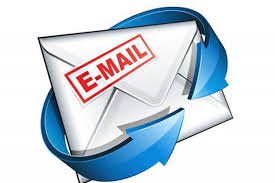

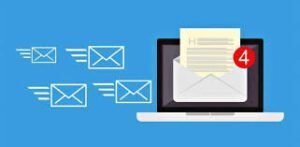
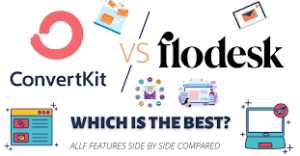
Ping : Email marketing platform:How to get started in email marketing in 2024? - Logiciels marketing